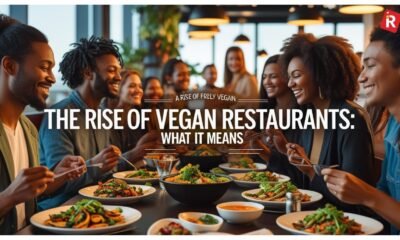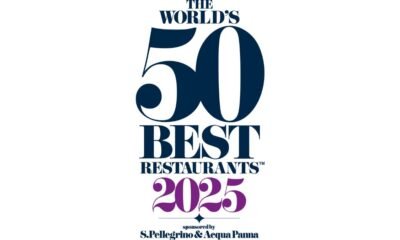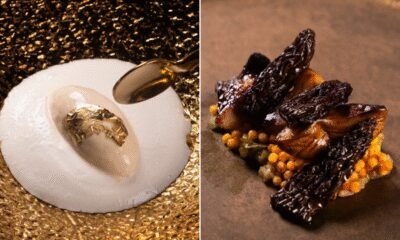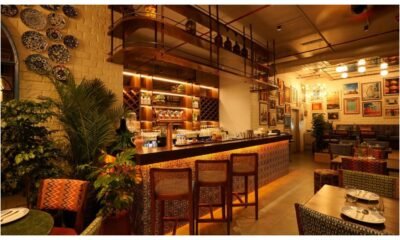Restaurants & Food
South Indian chefs are finally taking over US fine dining
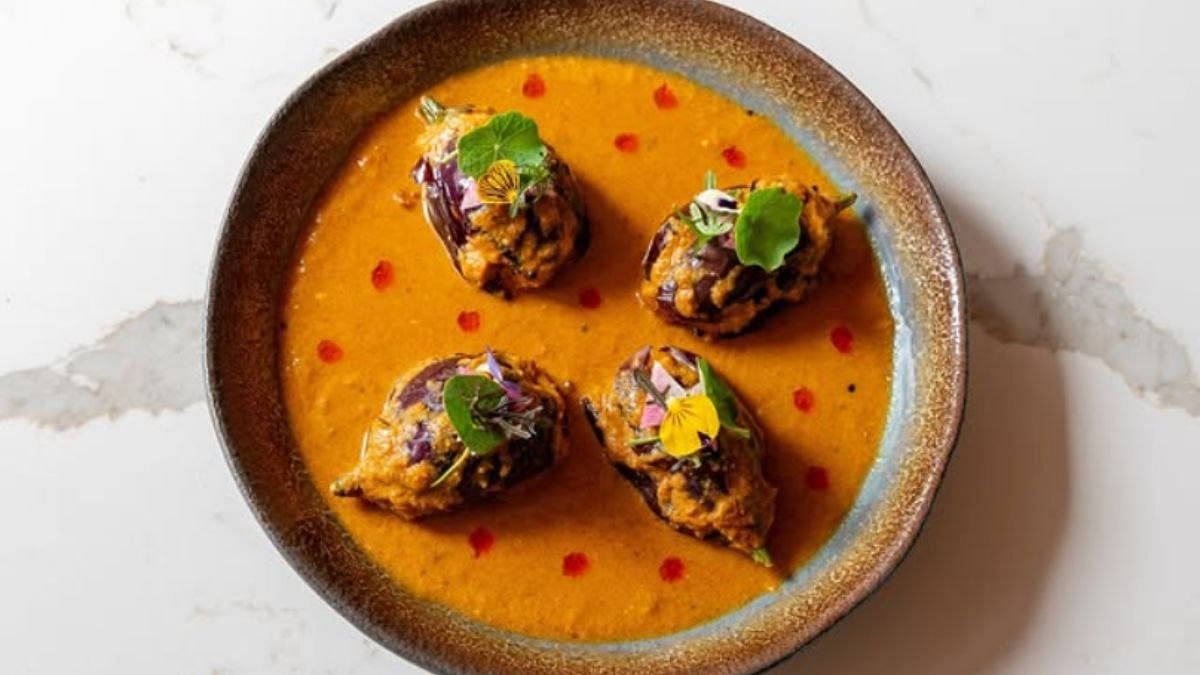
As the world updates its limited Indian cuisine vocabulary beyond butter chicken, chicken tikka, and naan, South Indian food is having its long-overdue moment. High-end Indian restaurants serving biryani, rogan josh, and kebabs have become a mainstay in the United States, and especially in the United Kingdom. But Semma is part of a wave of high-end restaurants that are celebrating South Indian cuisine and not just giving it a passing nod.
Chicago’s Thattu introduced the city to moru and kadala curry, while Copra popularised kori gassi in San Francisco in 2023. This year, Chatti brought karimeen to Manhattan. The bill can run up to $70—without alcohol—a far cry from the $17.49 rava masala dosa in Sarvanna Bhavan at 81 Lexington Ave, New York.
Indian food—especially South Indian—has never been this cool in the US. Behind this frenzy is a fearless tribe of chefs who decided to proudly serve the dishes they grew up eating—bold, regional, unapologetically South Indian.
“We don’t pretend; we don’t have to. We are proud of our food culture and the diners love us for who we are,” said chef Regi Mathew, who opened Chatti in February at West 37th Street, New York.
In London, restaurants like Rasa, which opened in 2014, and Quilon, which opened in 1999, have had legions of fans salivating over rasam, chicken sukka, gunpowder dosa, and vatha kuzhambu for decades.
What sets South Indian restaurants apart is that they don’t try to Westernise or dilute the flavours. There’s no foam, no deconstructed sambar, no unnecessary garnish. A prawn curry tastes exactly how it should: spicy and layered with coconut, tamarind, and the smoky heat of curry leaves.
The food isn’t gimmicky.
Food critic and former journalist Sourish Bhattacharyya credited the surge in the popularity of South Indian food to the growing visibility and influence of the South Indian diaspora.
“From JD Vance’s wife Usha to Vivek Ramaswamy, from Sundar Pichai to Satya Nadella, from Mindy Kaling to Poorna Jagannathan, there’s no walk of life that doesn’t have hugely successful figures from the South Indian diaspora,” he said.
Bhattacharyya also noted that people from South India now form a visible, vocal majority in the Indian diaspora.
According to him, the needle has moved from the Ashok Bajaj model of Indian restaurants in the US, where southern flavours were muted in favour of butter chicken, gobhi Manchurian, and ‘naan bread’.
“Remember Mindy Kaling preparing dosas with Kamala Harris in the run-up to the 2020 election campaign? The success of the Dosateria chain of restaurants was the first sign of how mainstream South Indian restaurants were becoming,” Bhattacharyya recalled.
‘What I grew up eating’
Chef Vijaya Kumar grew up eating snails in his Tamil Nadu village, but as a child, he never dared admit it to his classmates. Snails were seen as “poor people’s food”, and the shame kept him silent.
Years later, in a powerful full-circle moment, Kumar proudly features that very dish—nathai pirattal—on the menu at Semma. Made with the French Petit Gris snails and flavoured with ginger and tamarind, the dish is a tribute to both his heritage and the lesser-known corners of Tamil cuisine.
Kumar opened Semma in 2021 with restaurateurs Roni Mazumdar and Chitan Pandya. A year later, it earned a Michelin star—and more importantly, it has held on to it since.
“My grandparents used to take me deer hunting, and my mother would collect goat intestines from the butcher—free of cost,” Kumar recalled. “She’d turn them into wholesome, incredibly flavourful dishes. Those memories have found a place on my menu.”
This sense of rootedness, of a distinct place called home, comes across immediately in the menu: Chettinad maan kari (venison shank braised with star anise and black stone flower), kudal varuval (a dry-fried preparation of goat intestines), Dindigul biryani (aromatic rice with goat meat), and Attu Kari Sukka (a fiery lamb fry).
“This is South Indian food in its most honest, unfiltered form,” Kumar said.
In April 2024, when two TikTok influencers, whose handle @theviplist is known for brutal takedowns of high-end restaurants, slammed Semma, the response was swift. Even Padma Lakshmi waded into the debate.
“Before you go off slagging other cuisines, you should understand them a little bit more, or at least, I don’t know, learn how to pronounce the dishes you’re actually critiquing,” she said in a video on TikTok.
“Semma isn’t made for you; it’s made for us. And I’m pretty sure if nobody but desis went there for the rest of its existence, it would still be booked solid for the next decade,” she added.
South Indian chefs are flaunting their culture now.
“Earlier, chefs in India wanted to become a French chef or an Italian one,” said chef Srijith Gopinathan, who co-founded Copra. “But now, South Indian chefs want to be known for who they are. They want to showcase their food and tell their own stories.”
After becoming the only Indian chef in the US to earn two Michelin stars, Gopinathan gave it all up to return to cooking the South Indian food he grew up with.
After being associated with Taj Campton Place in San Francisco for 15 years, Gopinathan opened Ettan in Palo Alto in 2020, followed by Copra (named after dried coconut flesh) in 2023.
At Copra, the food is inspired by the cuisines of Kerala and Tamil Nadu, and also has influences from the neighbouring nation, Sri Lanka. The three cuisines are quite similar, with many common ingredients such as seafood, tamarind, plantains, rice, and, of course, copra.
“Earlier, we modernised to make the food appealing to the people who weren’t aware of the Indian cuisine,” he said. “Today, chefs around the world want to do Indian cuisine.”
Gopinathan’s focus is on highlighting micro-cuisines of South India. His menu features kallappam (a fermented rice and coconut pancake found in Kerala), slow-cooked octopus, chargrilled bone marrow with chukka masala, braised lamb shank, crab curry, and black cod cooked in banana leaves.
In a similar way, Regi Mathew’s Chatti brings the essence of Kerala’s toddy shop cuisine to New York, taking inspiration from the communal dining culture. The restaurant offers a range of “touchings”—small portion side dishes meant to accompany drinks—featuring prawn pouches, spiced beef brisket, jackfruit cutlets, and duck mappas.
The menu includes beef fry, squid roast, and mussel roast, items that stay true to traditional recipes without Western adaptations. This approach reflects a broader movement in the Indian culinary scene, where chefs are embracing regional authenticity.
While Mathew steers clear of fusion cuisine, the menu is still unconventional. Coconut clams, tender jackfruit cutlet, and filter coffee pudding offer something new even for those familiar with the cuisine. Cocktails like Cochin Sour (made with Pandan whiskey, port wine, and cinnamon) and Sam Bar (made with vodka, clarified sambhar, and curry leaf powder), reinforce this story.
“Filter coffee is woven into the fabric of South Indian life. We wanted to reimagine it as a dessert. And coconut—another cornerstone of Kerala cuisine—has been integrated across the menu in thoughtful, authentic ways,” Mathew added.
Nishant Nair, a New Yorker whose father and grandmother once ran a toddy shop in Chittur, said that the experience at Chatti is deeply nostalgic.
Nair came across Chatti one evening while on a date near Times Square. Half-distracted by conversation, the medical engineer glanced through the menu and ordered prawn pouches.
The dish arrived wrapped delicately in a banana leaf. The first bite hit him like a wave—there was coconut masala, malabar tamarind, and then nostalgia. His eyes welled up and his grandmother’s face flickered to life in his mind.
“This is exactly what I grew up eating,” the 33-year-old said with certainty. Since Chatti’s opening in February, Nair has become a regular—it’s a personal ritual.
“It brings me closer to home,” he added. “To my childhood, to my memories.”
Also read: Palace dramas are the new OTT soaps. Real royals are just embarrassed
Tourism and migration
After enjoying a wholesome meal at Quilon, chef Sriram Aylur’s Michelin-starred restaurant in London, a family once offered a single piece of feedback as they left: “Could you add more Indian food to the menu?”
This was in the early 2000s—a time when South Indian cuisine was so unfamiliar in the UK that diners often mistook it for Middle Eastern or Sri Lankan.
But Aylur didn’t take the family’s advice and made no changes to his menu.
“It was hilarious,” he recalled. “But today, to see how much awareness and respect there is for South Indian cuisine—especially among non-Indian diners—is proof of how far we’ve come. And how much of that journey restaurants like ours have shaped.”
Quilon became the first South Indian restaurant in the world to earn a Michelin star in 2008, an honour it has retained through the years as its popularity soared.
At the heart of the global rise of South Indian cuisine lie two powerful forces: tourism and migration for work and business.
While South India has always been among the top destinations for international tourists, this interest only began to reflect in a love for the cuisine over the last decade.
“As people travelled, their understanding of Indian cuisine evolved,” Aylur said. “They moved beyond the usual North Indian staples and began discovering the incredible diversity of regional and even hyperlocal dishes.”
The second driver was the growing presence of South Indians abroad—not just in the labour force and the student community, but also as entrepreneurs and professionals.
While it took some time, the rise of southern cuisines in the West is changing the image of Indian food being “greasy” and “too spicy.”
London-born art curator Pat Evans’ first experience with Indian food wasn’t a fond memory. He was put off by the thick layer of oil oozing from the chicken curry box.
“It screams cholesterol from afar,” he said.
Chef Sriram Aylur explained that North Indian restaurants often serve Indian-inspired dishes rather than truly authentic ones. This is because dining out is about the overall experience, and the food is typically made richer—with more oil and spices—than what we cook at home. In contrast, South Indian cuisine tends to remain largely authentic and unaltered, even when served in restaurants.
“But, that’s why it did take time for people to embrace it,” he added.
In the post–Covid world, where clean eating has become a norm, South Indian food promises flavours minus the heartburn, bloating, heaviness, and other health concerns. And diners like Evans are coming back for more.
“My mouth doesn’t feel a burning sensation, instead the multi-layered flavour experience of the prawns and scallops has got me hooked,” Evans said.
“For us, the cuisine is a middle ground between the boring and bland British food and the overly spicy and greasy chicken tikkas.”
Meanwhile, over at Semma, Vijaya Kumar is still on a quest to bring his childhood memories to life—one dish at a time.
His latest creations are a playful trio: roadside kalan, annasi pazham scallops, and a mamabazham dessert.
Roadside kalan is a twist on street-style chaat, made with finely chopped mushrooms tossed in spicy sauces commonly used in Indian Chinese cuisine.
Annasi pazham scallops pairs fresh dayboat scallops with pineapple pachadi and jaggery, while the mamabazham dessert is Kumar’s mango-laced love letter to his childhood obsession with Alphonsos.
“Every dish unlocks a childhood memory… and this tradition will continue forever because the recipes are endless,” Kumar said.
(Edited by Prasanna Bachchhav)
Restaurants & Food
Vero Beach area restaurant and food truck inspections July 28-Aug. 3
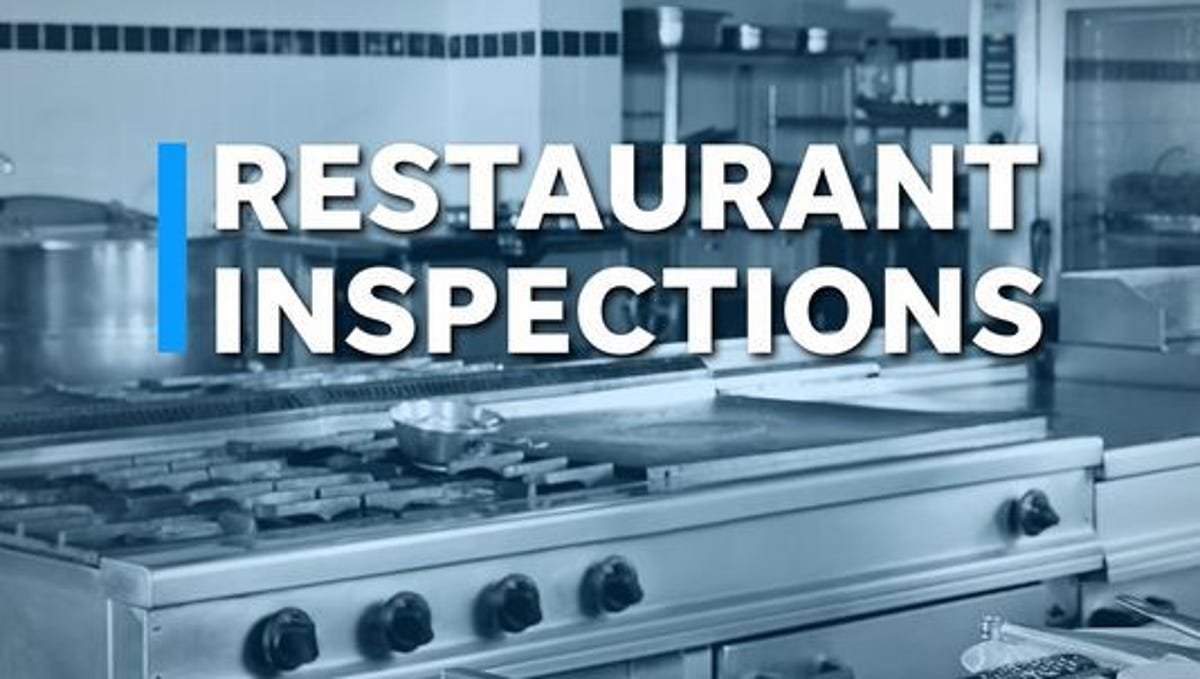
What Do Restaurant Inspectors Look For?
Each inspection report is a “snapshot” of conditions present at the restaurant at the time of the inspection.
Ginny Beagan, Wochit
You can use the database to search by county or by restaurant name.
Florida’s restaurant owners are not required to post restaurant inspection results where guests can see them. So every week, we provide that information for you.
For a complete list of local restaurant inspections, including violations not requiring warnings or administrative action, visit our Indian River County restaurant inspections site.
Here’s the breakdown for recent health inspections in Indian River County, Florida, for the week of July 28-Aug. 3, 2025. Please note that some more recent, follow-up inspections may not be included here.
Disclaimer: The Florida Department of Business & Professional Regulation describes an inspection report as a ‘snapshot’ of conditions present at the time of the inspection. On any given day, an establishment may have fewer or more violations than noted in their most recent inspection. An inspection conducted on any given day may not be representative of the overall, long-term conditions at the establishment.
For full restaurant inspection details, visit our Indian River County restaurant inspection site.
Which Indian River County restaurants had high priority violations?
5135 20th St., Unit 108, Vero Beach
Routine Inspection on July 31
Follow-Up Inspection Required: Violations require further review, but are not an immediate threat to the public.
11 total violations, with 4 high-priority violations
- High Priority – Employee began working with food, handling clean equipment or utensils, or touching unwrapped single-service items without first washing hands. Employee began working with wontons without washing hands. Educated manager **Corrective Action Taken** **Warning**
- High Priority – Live, small flying insects found 3 live flies in kitchen **Warning**
- High Priority – Raw animal food stored over/not properly separated from ready-to-eat food. -raw chicken over veggies in cook line cooler – boxes of raw chicken stored next to raw cabbage in tall cooler. Advised employee to separate **Corrective Action Taken** **Warning**
- High Priority – Time/temperature control for safety food cold held at greater than 41 degrees Fahrenheit. Raw chicken 61f. Cold holding. Tofu 51f cold holding. ; In reach in cooler. Door was not fully shut. Advised to rapid chill cooked noodles (73F); cut cabbage (89F) sitting out on counter. Employee states it was sitting out for 45 minutes. Employee moved to freezer to rapid chill **Corrective Action Taken** **Warning**
3450 Ocean Drive, Vero Beach
Complaint Inspection on July 29
Follow-Up Inspection Required: Violations require further review, but are not an immediate threat to the public.
7 total violations, with 3 high-priority violations
- High Priority – Time/temperature control for safety food cold held at greater than 41 degrees Fahrenheit. Small reach in-Rice 48f. Shrimp salad 48f. Cut tomatoes 49f. Hot dogs 48f all cold holding for 3 hours. Manager moved to rapid chill. Tall single door cooler- Tall stainless cooler- Cheese 47f cold holding. . ; shaved beef (51F – Cold Holding); salmon (44F – Cold Holding); burgers (44F – Cold Holding) Manager states they just had busy lunch. All items have been in coolers for 3 hours. Advised to rapid chill all items. Advised to have coolers checked for issues and temperature turned down on units Salad cooler- cut lettuce 51f. Ranch 48f. Blue cheese dressing 47f. Cold holding. Walk in cooler – coleslaw 46f. **Repeat Violation** **Admin Complaint**
- High Priority – Time/temperature control for safety food, other than whole meat roast, hot held at less than 135 degrees Fahrenheit. mushrooms (122F – Hot Holding); onions (122F – Hot Holding) in steam table for 1 hour-advised to reheat **Corrective Action Taken**
- High Priority – Toxic substance/chemical improperly stored. Bleach spray stored on rack with bread.Employee removed **Corrected On-Site**
3450 Ocean Drive, Vero Beach
Complaint Inspection on July 30
Follow-Up Inspection Required: Violations require further review, but are not an immediate threat to the public.
5 total violations, with 1 high-priority violation
- High Priority – – From initial inspection : High Priority – Time/temperature control for safety food, other than whole meat roast, hot held at less than 135 degrees Fahrenheit. mushrooms (122F – Hot Holding); onions (122F – Hot Holding) in steam table for 1 hour-advised to reheat **Corrective Action Taken** – From follow-up inspection 2025-07-30: **Time Extended**
725 S.W. 27th Ave., Suite C, Vero Beach
Routine Inspection on July 30
Follow-Up Inspection Required: Violations require further review, but are not an immediate threat to the public.
9 total violations, with 1 high-priority violation
- High Priority – Time/temperature control for safety food cold held at greater than 41 degrees Fahrenheit. Spinach sauce 46f. Operator states employee moved stuff around in cooler 1 hour ago. Item was moved to walk in to chill Pizza cooler- Chicken 48f. Tomatoes 52f. Cheese 48f. Ham 48f all cold holding for 1 hour **Corrective Action Taken** **Corrective Action Taken** **Warning**
1285 U.S. 1, Vero Beach
Routine Inspection on July 28
Follow-Up Inspection Required: Violations require further review, but are not an immediate threat to the public.
4 total violations, with 1 high-priority violation
- High Priority – Time/temperature control for safety food cold held at greater than 41 degrees Fahrenheit. Marinara sauce 51f. Meat sauce 71f. Cream sauce 49f. ; peas 53f all – Cold Holding 3.5hours. Employee added items to ice to rapid chill **Corrective Action Taken** **Warning**
2121 14th Ave., Vero Beach
Routine Inspection on July 30
Follow-Up Inspection Required: Violations require further review, but are not an immediate threat to the public.
3 total violations, with 1 high-priority violation
- High Priority – Time/temperature control for safety food cold held at greater than 41 degrees Fahrenheit. Blue cheese 44-47f. In service 1.5 hours; Advised to add more ice to ice bath. **Corrective Action Taken**
762 21st St., Vero Beach
Routine Inspection on July 29
Follow-Up Inspection Required: Violations require further review, but are not an immediate threat to the public.
12 total violations, with 3 high-priority violations
- High Priority – Dishmachine chlorine sanitizer not at proper minimum strength. Discontinue use of dishmachine for sanitizing and set up manual sanitization until dishmachine is repaired and sanitizing properly. Reading 0ppm. Operator had detergent hooked up instead of sanitizer. Swapped chemicals and primed. Reading 0ppm **Warning**
- High Priority – Live, small flying insects found 2 live flies in kitchen **Warning**
- High Priority – Stop Sale issued due to food not being in a wholesome, sound condition. Salmon thawed in ROP in walk in cooler states to remove prior to thawing
2855 Ocean Drive, Suite B1, Vero Beach
Routine Inspection on July 28
Follow-Up Inspection Required: Violations require further review, but are not an immediate threat to the public.
1 total violation, with 1 high-priority violation
- High Priority – – From initial inspection : High Priority – Dishmachine chlorine sanitizer not at proper minimum strength. Discontinue use of dishmachine for sanitizing and set up manual sanitization until dishmachine is repaired and sanitizing properly. Reading 0ppm at bar. Primed and ran three times. Still reading 0ppm **Repeat Violation** **Warning** – From follow-up inspection 2025-07-28: Eco lab is scheduled to come out this afternoon**Time Extended** **Time Extended**
709 U.S. 1, Sebastian
Routine Inspection on July 30
Follow-Up Inspection Required: Violations require further review, but are not an immediate threat to the public.
12 total violations, with 2 high-priority violations
- High Priority – Dented/rusted cans present. See stop sale. 1 dented can of oyster sauce
- High Priority – Time/temperature control for safety food cold held at greater than 41 degrees Fahrenheit. Raw pooled egg 52F recommend to rapid chill. Rechecked egg 41F **Corrected On-Site**
What agency inspects restaurants in Florida?
Routine regulation and inspection of restaurants is conducted by the Department of Business and Professional Regulation. The Department of Health is responsible for investigation and control of food-borne illness outbreaks associated with all food establishments.
How do I report a dirty restaurant in Florida?
If you see abuses of state standards, report them and the Department of Business and Professional Regulation will send inspectors. Call the Florida DBPR at 850-487-1395 or report a restaurant for health violations online.
Get the whole story at our restaurant inspection database.
What does all that terminology in Florida restaurant inspections mean?
Basic violations are those considered against best practices.
A warning is issued after an inspector documents violations that must be corrected by a certain date or within a specified number of days from receipt of the inspection report.
An administrative complaint is a form of legal action taken by the division. Insufficient compliance after a warning, a pattern of repeat violations or existence of serious conditions that warrant immediate action may result in the division initiating an administrative complaint against the establishment. Says the division website: “Correcting the violations is important, but penalties may still result from violations corrected after the warning time was over.”
An emergency order — when a restaurant is closed by the inspector — is based on an immediate threat to the public. Here, the Division of Hotels and Restaurants director has determined that the establishment must stop doing business and any division license is suspended to protect health, safety or welfare of the public.
A 24-hour call-back inspection will be performed after an emergency closure or suspension of license.
Restaurants & Food
Owners of Anokha Indian restaurant in Short Pump open new spot in Chesterfield

The owners of a longtime Short Pump-area Indian restaurant have branched into Chesterfield.
Last month Jassi Singh and Charanjeet Ghotra opened Rutba Indian Kitchen at 13822 Village Place Drive in the Midlothian Village Square shopping center.
Rutba is Singh and Ghotra’s second local restaurant, joining Anokha Unique Cuisine of India, which they opened near Short Pump Town Center in 2008. The duo also own two restaurants in Charlottesville, Milan Indian Restaurant and Kanak Indian Kitchen.
Ghotra said Rutba’s menu is similar to Kanak’s with classics like butter chicken, samosas and grilled kebabs, along with Chukundari kofta, which is a vegetarian take on meatballs with beetroots, and the Paneer Bhatura, a type of bread that’s stuffed with Indian cheese and spices.
“We have a lot of dishes that we had created (at Kanak) that are very popular there, and people here like them as well,” Ghotra said.
Entrees at Rutba range from around $17 to $25, and it also offers a variety of Indian beers and wines, as well as a full cocktail menu.
Rutba restaurant debuted in mid-July and is open seven days a week for lunch and dinner.
Last year Singh and Ghotra purchased Rutba’s 3,000-square-foot Village Place Drive building, which was formerly a Wendy’s, for $1.2 million, according to county records. They converted the space from a fast-food joint to a sit-down restaurant with the help of Fultz & Singh Architects.
Singh and Ghotra have been in the industry for decades, starting out in restaurants in New York and Virginia Beach in the 1990s. They’ve opened four restaurants over the course of over 20 years, first with Milan in Charlottesville in 2003, and prior to Rutba, their most recent opening was in early 2020 with Kanak.
Ghotra said he and Singh always make sure their restaurants are stable and successful before moving onto another.
“If you can’t handle it properly, then there’s no point in opening (a restaurant) then closing it, right?” he said.
Rutba and Midlothian Village Square are just a mile down the street from Winterfield Crossing, which just signed on Stella’s Grocery as its newest food tenant.
Restaurants & Food
Restaurants use unsafe colouring agent: Karnataka minister on quality food | Latest News India
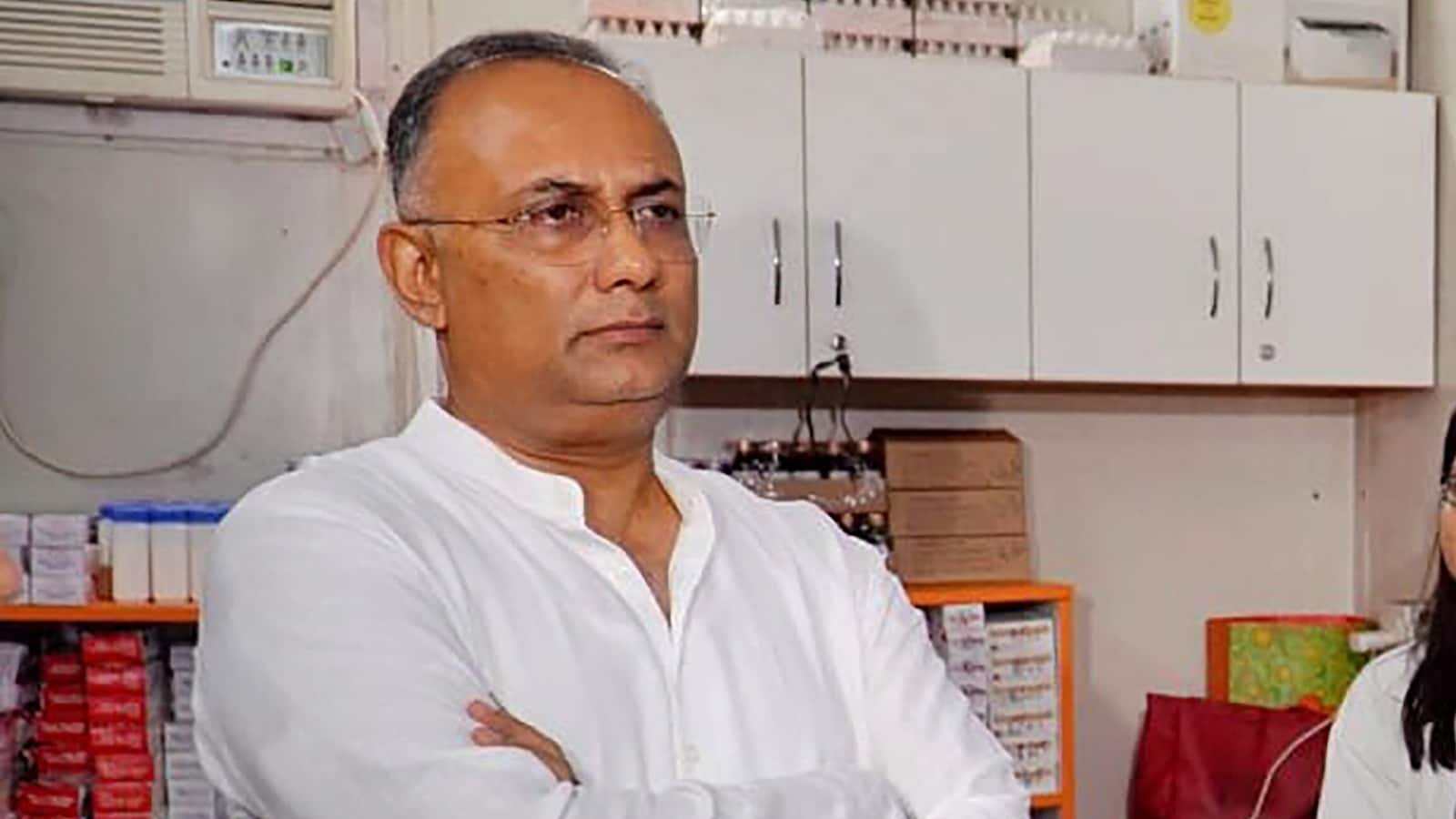
Karnataka Health Minister Dinesh Gundu Rao on Monday appealed to people not to be “fooled” by attractive and colourful dishes, but to insist on safe and quality food.
He cited the recent testing of six samples belonging to the Empire Group of Restaurants, which turned out to be unsafe due to the use of banned synthetic colouring.
“Despite repeated warnings, the restaurant group continued to use the unsafe colouring agent. Only after legal notices were sent did the colour go from red to yellow,” the health minister told reporters during his weekly media briefing.
There was no response from the Empire Group of Restaurants.
According to the minister, better quality food and drugs can become the norm only if people insist on quality goods.
“Yes, the government needs to do its part and tackle this legally, but people too should cultivate quality conscious as culture,” he said.
The minister also said the health department held a video conference on July 30 with cooking oil manufacturers to insist that the trans-fat level should not exceed 2 per cent.
“We told them that if it exceeds 2 per cent, strong action will be taken against them,” he added.
Dinesh Gundu Rao said the oil manufacturers were also urged to sell used cooking oil (UCO) to manufacturers like Pyrene Industries, which converts UCO into biodiesel.
According to 2024-25 data, 28,73,124 litres of UCO were used to manufacture biodiesel and soap, he said.
“We want this figure to increase substantially so that UCO does not go back into the market for cooking purposes,” he added.
Rao said the Karnataka government has merged the enforcement division of Ayurveda, Siddha and Unani (ASU) medicines under the AYUSH Department, as well as the existing AYUSH drug testing laboratory in Bengaluru, with Drug Control Division of the Food Safety and Drug Administration Department for better functioning of the Health Department.
According to him, the government’s proposed app to control drug safety is expected to be functional by the end of this month.
“With this app, we can immediately withdraw defective drugs, as we can track at distributor level. So, we can put an immediate stop to further sale of that drug,” said the minister.
He said, once the app is in force, they will expand its scope. “Next will be to take it to the pharmacy level. We want to onboard every pharmacy on the app,” he added.
At present, the recall procedure takes two days, he said, citing the recent recall of nearly 40 lakh drugs in two days.
“This too, we had made a breakthrough with the help of a software. Earlier, it used to take nearly 30 days to recall batches of failed drugs from the market,” he added.
The minister also said work is progressing at expected pace in bringing the private ambulances and mobile medical units under the ambit of Karnataka Private Medical Establishments (KPME) Act. “We will be coming out with an amendment soon,” he added.
-

 Brand Stories2 weeks ago
Brand Stories2 weeks agoBloom Hotels: A Modern Vision of Hospitality Redefining Travel
-

 Brand Stories1 week ago
Brand Stories1 week agoCheQin.ai sets a new standard for hotel booking with its AI capabilities: empowering travellers to bargain, choose the best, and book with clarity.
-

 Destinations & Things To Do2 weeks ago
Destinations & Things To Do2 weeks agoUntouched Destinations: Stunning Hidden Gems You Must Visit
-

 Destinations & Things To Do1 week ago
Destinations & Things To Do1 week agoThis Hidden Beach in India Glows at Night-But Only in One Secret Season
-

 AI in Travel2 weeks ago
AI in Travel2 weeks agoAI Travel Revolution: Must-Have Guide to the Best Experience
-

 Brand Stories1 month ago
Brand Stories1 month agoVoice AI Startup ElevenLabs Plans to Add Hubs Around the World
-

 Brand Stories4 weeks ago
Brand Stories4 weeks agoHow Elon Musk’s rogue Grok chatbot became a cautionary AI tale
-

 Asia Travel Pulse1 month ago
Asia Travel Pulse1 month agoLooking For Adventure In Asia? Here Are 7 Epic Destinations You Need To Experience At Least Once – Zee News
-

 AI in Travel1 month ago
AI in Travel1 month ago‘Will AI take my job?’ A trip to a Beijing fortune-telling bar to see what lies ahead | China
-

 Brand Stories2 weeks ago
Brand Stories2 weeks agoContactless Hospitality: Why Remote Management Technology Is Key to Seamless Guest Experiences

